Chinese anti-aircraft machine guns in the Sino-Japanese War
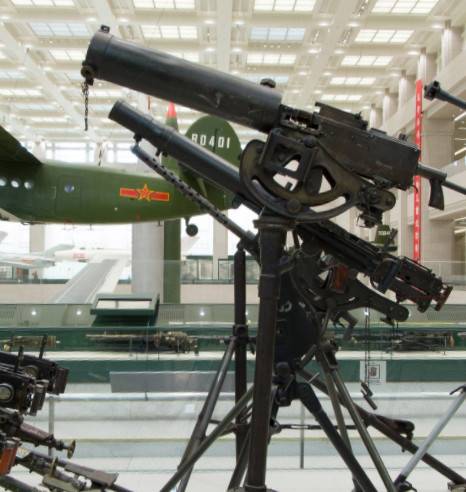
In the initial period of the Sino-Japanese War, the combat aircraft of the Imperial Japanese Army dominated the skies of China. To remedy the situation, the Chinese government imported anti-aircraft machine guns and anti-aircraft artillery systems, and also invited foreign military advisers. In the second half of the 1930s, Soviet and American fighter pilots fought on the side of the Chinese government.
Chinese anti-aircraft machine guns used in the Sino-Japanese War
Before the start of the Sino-Japanese War (1937-1945), in a standard infantry division of the Chinese army of 9600 people, it was supposed to have 274 light and heavy machine guns, of which the share of heavy machine guns was 10%. In practice, machine guns were always in short supply.
The first machine gun, the production of which in noticeable quantities was established at Chinese enterprises, was the Browning M1917 chambered for 7,92 × 57 mm. it weapon, created by John Browning in collaboration with Colt, was an analogue of the Maxim machine gun, but differed in a simpler design.
The Chinese version of the water-cooled heavy machine gun was designated Type 30 or Triple-Ten. Chinese sources claim that the first copy was made on October 10, 1921 (the 10th year of the Republic).
The M1917 heavy machine gun adopted by the American army was considered very reliable, but its Chinese copies were not of high quality and gave a large number of delays when firing. But, for lack of a better one, the Chinese army continued to use these machine guns until the end of the 1940s. Part of the Type 30 machine guns were installed on handicraft anti-aircraft guns.
There is also information that in the second half of the 1930s, the Chinese government purchased a batch of 7,92 mm Ckm wz.30 machine guns. This machine gun was a Polish version of the Browning M1917.
After the US entered World War II, starting in the second half of 1943, Chiang Kai-shek's troops began to receive M1917A1 machine guns chambered for 7,62 × 63 mm. The standard tripod machine M1917A1 provided a vertical aiming angle sufficient for firing at air targets.
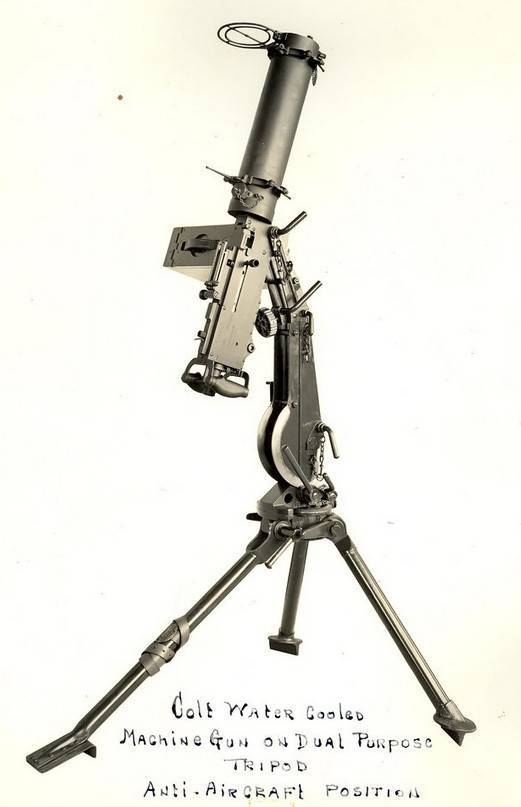
Browning M1917A1 machine gun in anti-aircraft firing position
The weight of the M1917A1 machine gun in the combat position on the machine was 47 kg. Belt capacity - 250 rounds. Rate of fire - 600 rds / min. Thanks to water cooling, this machine gun could deliver intense fire for a long time.
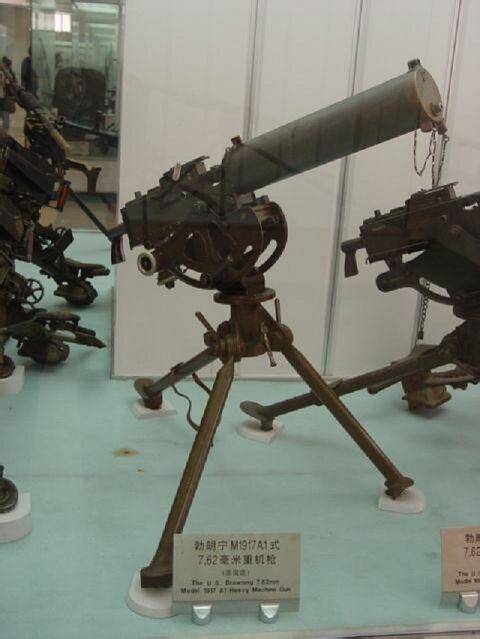
Browning M1917A1 machine gun on an anti-aircraft machine in the Military Museum of the Chinese Revolution
According to various estimates, between 7 and 000 Type 10 machine guns were produced in China and 000 of the original M30А2 were delivered. Subsequently, these machine guns were actively used in the civil war and in the initial period of hostilities on the Korean Peninsula.
German 7,92-mm machine guns MG.08 were very popular in China. Like many other samples of the beginning of the century, this machine gun in 1908 was created on the basis of a design developed by Hiram Maxim.
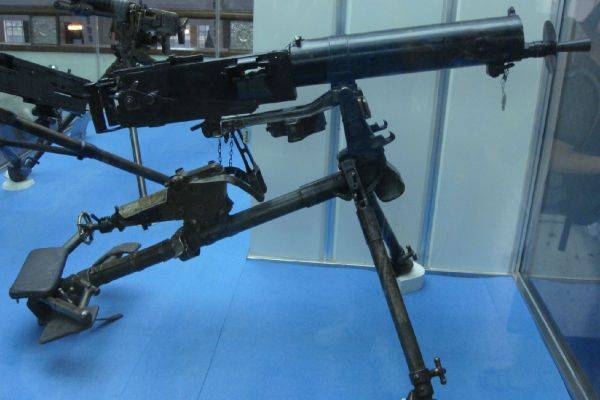
MG.08 easel machine gun at the Military Museum of the Chinese Revolution
In the first half of the 1930s, the German machine gun underwent modernization, after which the MG.08 received an anti-aircraft sight, a sliding anti-aircraft tripod and a shoulder rest, the rate of fire was increased to 650 rds / min. But at the same time, the mass of the machine gun in combat position exceeded 60 kg, which did not contribute to its mobility.
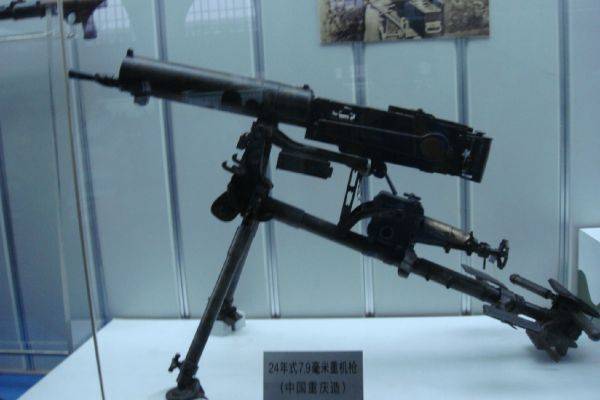
Type 24 easel machine gun at the Military Museum of the Chinese Revolution
Starting in 1935, the Hanyang arsenal, based on a set of documentation purchased in Germany, began producing the Type 24 machine gun. Compared to the Type 30 machine gun copied from the M1917, the licensed Chinese copy of the German MG.08 had a higher workmanship and good reliability.
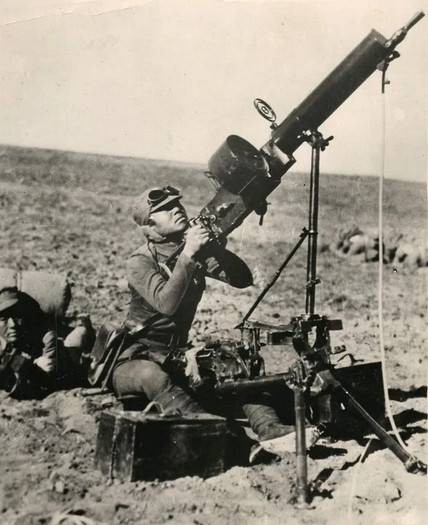
Machine guns Type 30, M1917A1, Ckm wz.30, MG.08 and Type 24 had close capabilities in terms of accuracy and density of fire when firing bursts. The effective range for air targets reached 500 m.
During the Sino-Japanese War, the Czechoslovakian ZB-26 light machine gun and its local versions produced at Chinese enterprises became widespread in the Chinese armed forces.
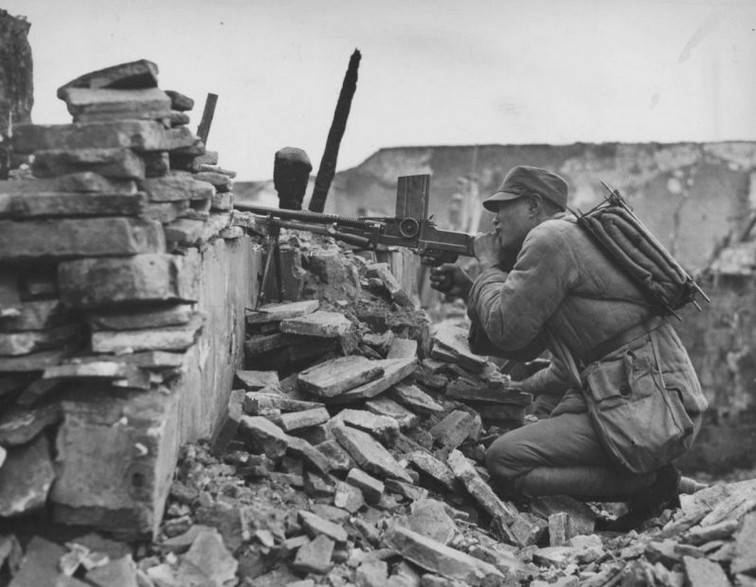
Chinese infantryman with ZB-26 light machine gun
From 1927 to 1939, Zbrojovka Brno delivered approximately 30 ZB-000 machine guns to China. In 26, the Chinese government made an attempt to establish its own production of the ZB-1927. The first enterprise to start producing the Czechoslovak light machine gun was the arsenal in the city of Tianjin.
Later, the assembly of ZB-26 machine guns was established in several more places, but the production volumes turned out to be small. The poor quality of the Chinese machine guns caused a lot of criticism. In addition, machine guns fired at different arsenals had non-interchangeable parts, which made it difficult to operate and repair weapons. The ZB-26 and its local versions did not receive their own designation; in the army, this weapon was referred to as a "Czech light machine gun".
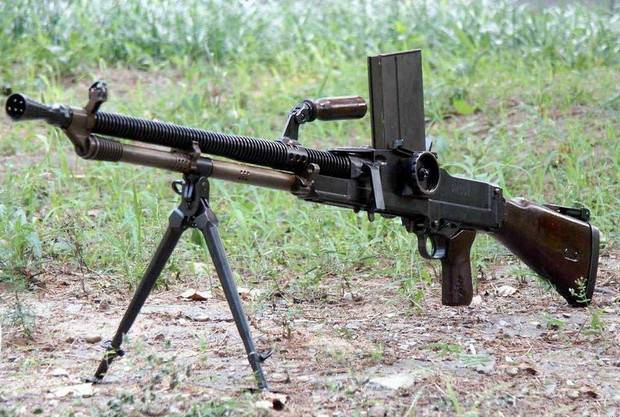
Light machine gun ZВ-26
The Czechoslovak-made light machine gun has established itself as a reliable and unpretentious weapon. For firing from the ZB-26, a German 7,92 × 57 mm cartridge was used. Automatic machine gun functioned by removing part of the powder gases from the barrel. The trigger mechanism allowed firing single shots and bursts. The mass of the ZB-26 without cartridges is 8,9 kg. Food was carried out from a box magazine for 20 rounds, inserted from the top. The rate of fire was 600 rds / min, but due to the use of a small-capacity magazine, the practical rate of fire did not exceed 100 rds / min.

Light machine gun ZB-26 on an anti-aircraft machine
Despite the fact that the ZB-26 was originally designed as a manual, it was often installed on machine tools and lightweight anti-aircraft tripods. Czech-made light machine guns, due to the relatively low rate of fire and a 20-round magazine, were not optimal for anti-aircraft fire, but their big advantage was their low weight and reliability.
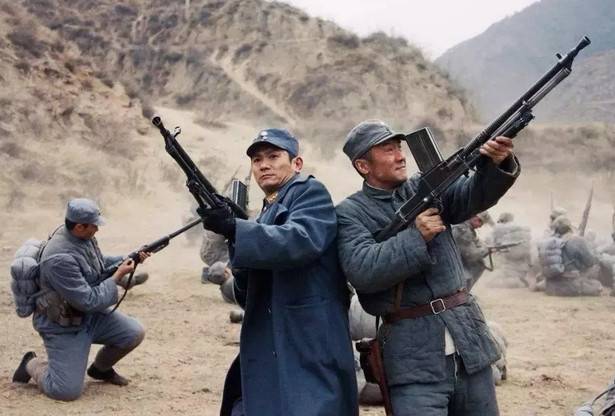
For its time, the ZВ-26 was a very good light machine gun and was popular among the troops. In the absence of specialized anti-aircraft machine gun mounts, light machine guns were very often used for firing at air targets, which can be seen in Chinese feature films telling about the events of the Sino-Japanese War.
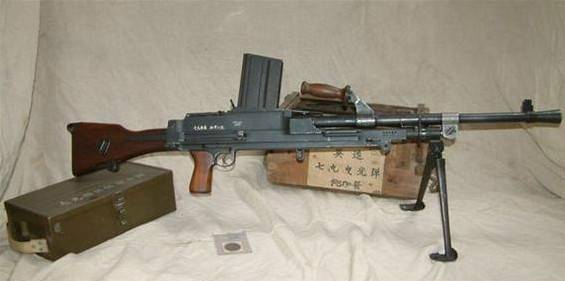
Canadian-made 7,92 mm Bren light machine gun
From 1944 to 1946, 13 Canadian-made 800-mm Bren light machine guns were delivered to the Kuomintang armed forces from 7,92 to 26. This model is easily distinguished from the ZB-7,7 by the barrel, which is devoid of ribs. In addition, Chinese troops fighting in Burma on the side of the Allies actively used Bren machine guns chambered for the British XNUMX mm cartridge.
From 1930 to 1937, 1 Hotchkiss Mle 492 machine guns were purchased in France. Machine guns converted to the 1914 × 7,92 mm cartridge were supplied to China. Several hundred machine guns "Hotchkiss" were assembled at Chinese enterprises.
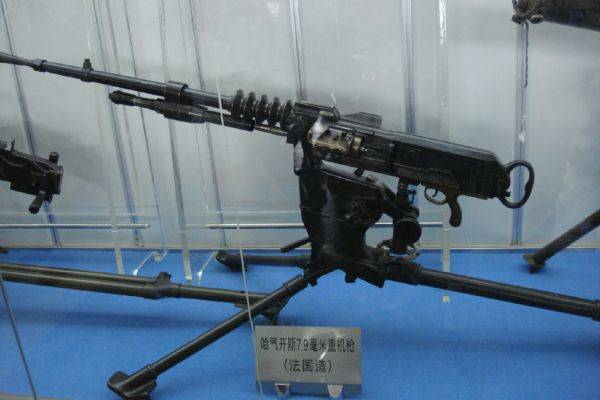
Hotchkiss Mle 1914 easel machine gun at the Military Museum of the Chinese Revolution
Unlike machine guns based on the design proposed by Hiram Maxim, the French heavy machine gun had an air-cooled finned barrel. Without replacing the barrel, 250 shots could be fired. Weight with the machine - 47 kg. Rate of fire - 450-500 rds / min. The machine gun is mounted for shooting on a tripod type machine. The legs of the machine can occupy three different positions, thereby changing the height of the line of fire. For anti-aircraft fire, a special additional rack was used.
Between 1932 and 1939, China purchased 3 Hotchkiss M500 7,92mm light machine guns.
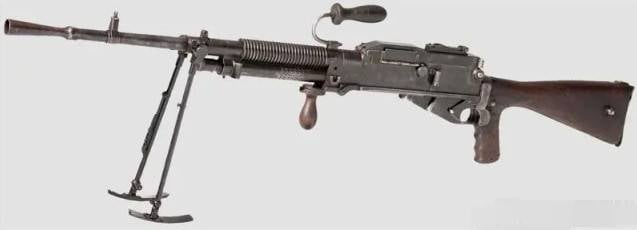
Hotchkiss M1922 light machine gun
The M1922 machine gun uses gas-operated automatics with a long stroke of a gas piston located under the barrel. The barrel of the machine gun is air-cooled, with fins at the rear of the barrel for better cooling. A quick change of the barrel in combat conditions is not provided.
The machine gun was powered from hard tape cassettes for 15 rounds inserted horizontally into the receiver on the receiver cover. Rate of fire - 450 rds / min. Weight - 9,6 kg.
In 1937, Chinese representatives placed an order in Czechoslovakia for 1 ZB-000 7,92 mm heavy machine guns. At the time of its introduction, it was one of the best air-cooled interchangeable barrel machine guns.
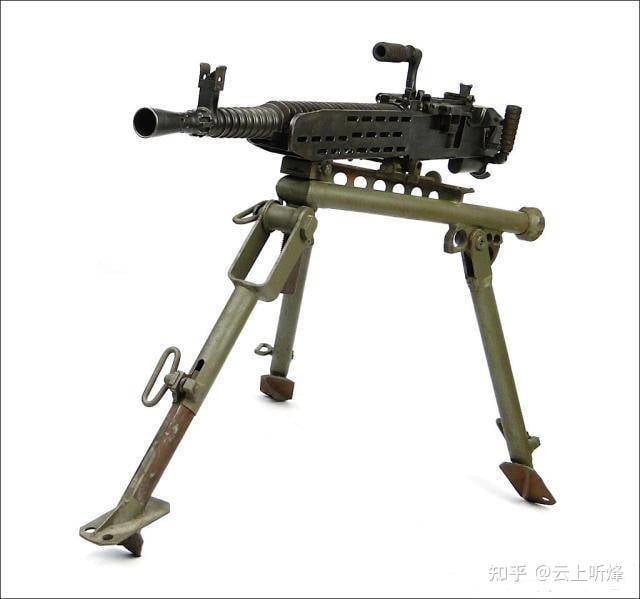
Machine gun ZB-53
Machine gun automation worked by removing part of the powder gases through a side hole in the barrel wall. The mass of the machine gun with the machine was 39,6 kg. For anti-aircraft fire, the machine gun was attached to the swivel of the folding sliding rack of the machine. Anti-aircraft sights consisted of a ring sight and a rear sight.
For firing at air targets, the machine gun had a rate of fire switch from 500 to 800 rds / min. Due to its relatively low weight for an easel machine gun, high workmanship, good reliability and high accuracy of firing, the ZB-53 was a commercial success.
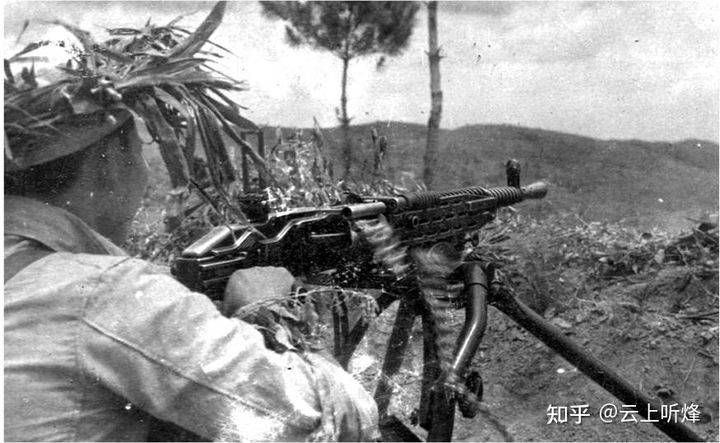
After the ZB-53 was successfully tested in combat operations against the Japanese, the Kuomintang military command wished to purchase a large batch of such machine guns. But the annexation of Czechoslovakia by Nazi Germany made this impossible.
During the fighting, Chinese troops captured several hundred Japanese Type 6,5 3-mm machine guns. This machine gun was a licensed copy of the French Hotchkiss M1914 and differed from it in the cartridge used and in a number of parts.
Production of the Type 3 began in 1914. Together with the machine gun, the machine gun weighed 54 kg. Power was supplied from hard cartridges for 30 rounds. In the design of the machine gun, a special oiler was provided for lubricating the cartridges before they were fed into the barrel, which guaranteed reliable extraction in conditions of contamination of the weapon, but increased its complexity and made operation difficult. The rigid belt was a simple, but not the most convenient solution in combat conditions, since it was easily deformed and brought dust and sand into the machine gun.
The rate of fire did not exceed 470 rds / min. Due to the use of a relatively weak 6,5x50mm machine gun cartridge, the Type 3 was considered underpowered. Despite a number of serious shortcomings, Type 3 under the designation Type 13 was produced at three enterprises in northeast China.
Based on the Type 3 machine gun, the 1932 mm Type 7,7 heavy machine gun was created in 92. It was also used by the Japanese army in China and captured by Chinese troops.
The Type 92 was most often used from a special infantry tripod mount with an adapter for anti-aircraft fire. The set of accessories included a ring anti-aircraft sight.
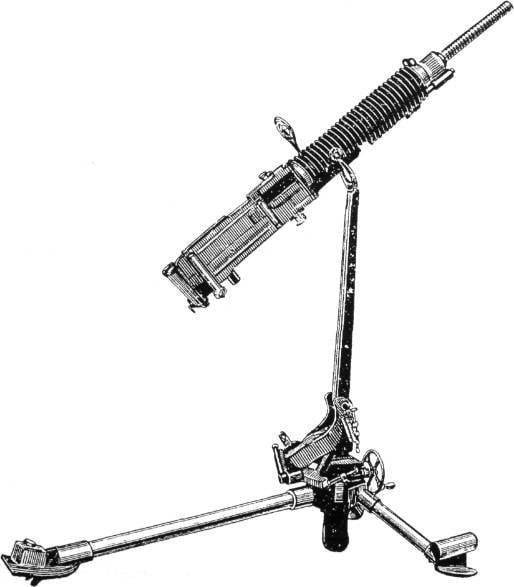
Type 92 machine gun on tripod in anti-aircraft position
The machine gun on the machine weighed about 55 kg, and to carry it around the battlefield on the legs of the machine there were sockets into which tubular handles were inserted - the machine gun was carried like a stretcher.
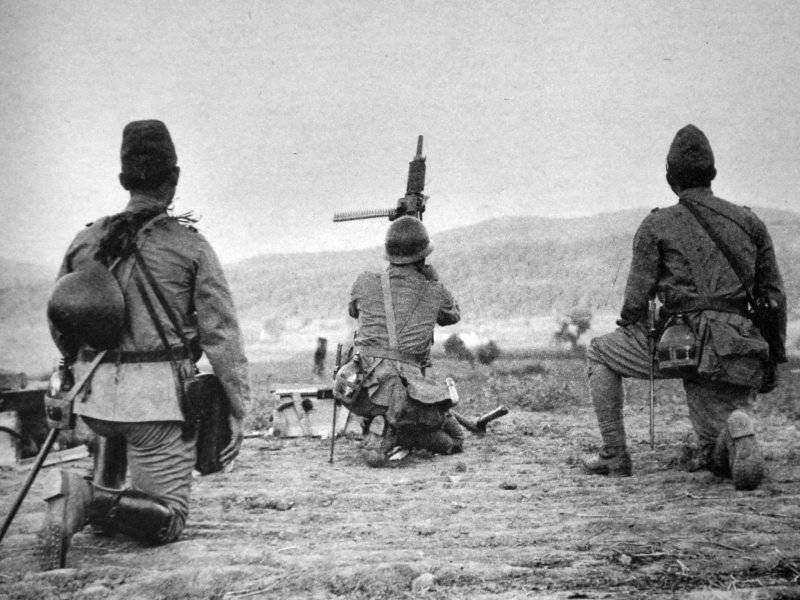
Type 92 machine gun crew firing at an air target
Feeding from rigid cassette tapes with a capacity of 30 rounds or from semi-rigid tapes consisting of hinged rigid links with a capacity of 3 rounds each (83 links in total, total capacity of 249 rounds). Rate of fire - 450 rds / min.
The Chinese infantry also had Japanese-made Type 6,5 11 mm light machine guns. It was created in 1922 on the basis of the French Hotchkiss M1909 machine gun and became the first Japanese-made light machine gun. Under the name Type 17, this machine gun was produced in China in the mid-1930s.
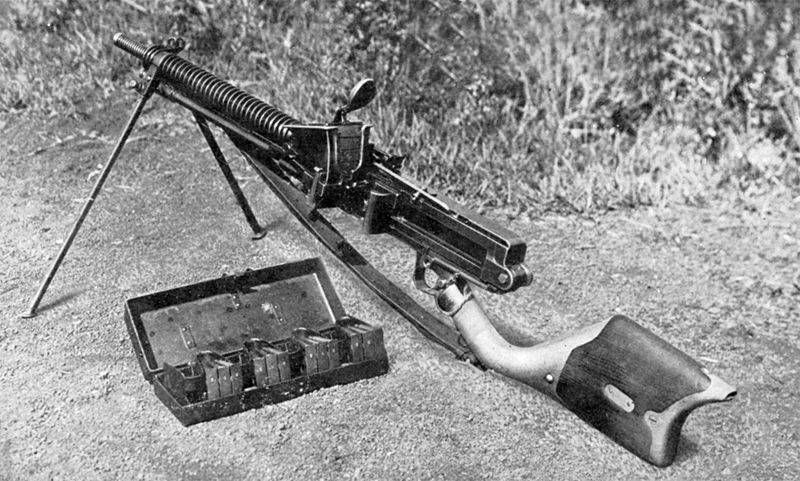
Type 11 light machine gun
The Type 11 machine gun had a unique power system. For loading, rifle clips for 5 rounds were used, inserted into a special receiver hopper (maximum 6 pieces). You can replenish the bunker while shooting. Additional lubrication of the cartridges was required, which caused the machine gun mechanism to quickly become dirty in the field, which led to frequent delays.
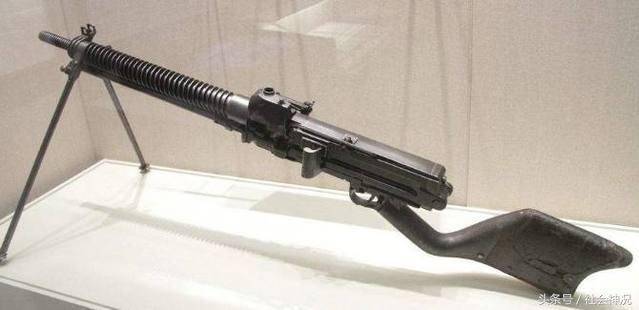
Type 11 light machine gun at the Military Museum of the Chinese Revolution
The mass of the Type 11 machine gun in the firing position was 10,5 kg. Rate of fire - up to 500 rds / min.
The Type 11 machine gun had a number of original design features that did not have the best effect on reliability. After getting acquainted with the Czechoslovak ZB-26 in Japan, Type 96 and Type 99 light machine guns were created and put into service.
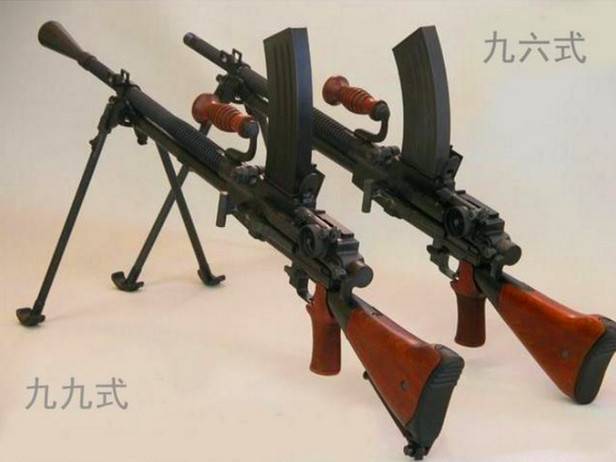
Type 96 light machine gun (right) and Type 99 light machine gun (left)
The Type 96 machine gun, adopted in 1936, was fired using a 6,5x50 mm cartridge. Machine gun weight - 9 kg. Food from the magazine for 30 rounds. Rate of fire - 450-500 rds / min.
The Type 96 machine gun was considered durable and reliable, but its 6,5 mm bullets had weak penetrating power when firing at cover, which led to the creation in 1937 of the Type 99 machine gun chambered for a more powerful cartridge, a new 7,7 mm cartridge. Mass production of 7,7 × 58 mm Arisaka cartridges began in 1939. This cartridge is designed on the basis of the British .303 British and is comparable in power to the American .30-06 Springfield.
The Type 99 machine gun became heavier by about 900 g. Externally, it differed from the Type 96 with a conical flash suppressor and could be equipped with an additional folding stock support. Some machine guns had a 2,5x optical sight, which was intended for firing at dusk, as well as at remote and small targets. In China, some of the captured machine guns were converted to the 7,92 × 57 mm cartridge.
For Chinese units fighting in Burma, the Americans supplied M1919A4 Browning machine guns chambered for 7,62 × 63 mm. This machine gun was the main American machine gun of the company and battalion level in World War II. With a relatively low weight, the M1919A4 machine gun has established itself as a weapon of high reliability.
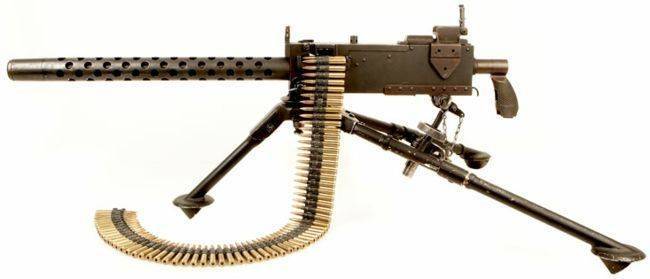
Machine gun Browning М1919А4 on the M2 machine
The main difference between the M1919A4 and the M1917A1 was the use of a massive air-cooled barrel, enclosed in a perforated casing. A quick replacement of the barrel in combat conditions was not provided. In addition, the machine gun received a new low-profile M2 machine, which had simplified (compared to the M1917 machine) guidance mechanisms and significantly less weight. The weight of the Browning М1919А4 machine gun together with the machine was 20,5 kg. Rate of fire - 400-450 rds / min. Food was carried out from a tape for 250 rounds.
Although the regular M2 infantry machine did not allow firing at high elevation angles, the M1919A4 machine gun was very often used as an anti-aircraft gun, for which it was mounted on special machines. Anti-aircraft machine guns of this type were equipped Tanks and American-made armored vehicles. The Chinese units also had machine guns mounted on anti-aircraft turrets.
A lighter version of the M1919A4 machine gun was the M1919A6, which entered service in 1943. The M1919A4 machine gun differed from the M1919A6 in its butt, bipod and lined barrel.
After the surrender of Japan, the M1919A4 and M1919A6 machine guns were actively used in the civil war. Approximately 1 air-cooled Browning machine guns were captured by the Chinese Communists and subsequently fought on the Korean Peninsula against UN forces.
The most powerful anti-aircraft machine gun available to the Chinese army during the Sino-Japanese War was the 12,7mm Browning M-2. The armed forces of the Kuomintang received 460 heavy machine guns with water and air cooling. 12,7 mm Brownings were mounted on armored vehicles and used by infantry.
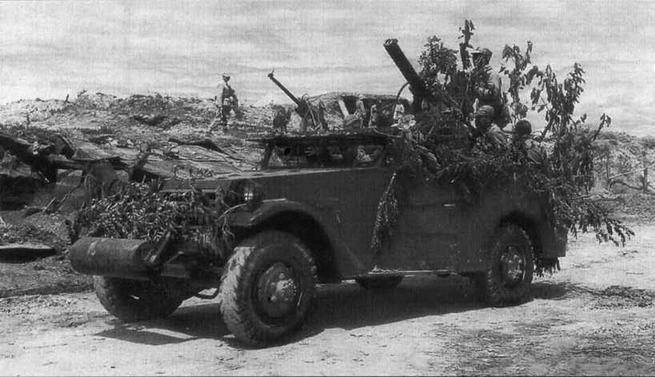
A 3 mm Browning M1A7,62 machine gun and a 1919 mm Browning M4 anti-aircraft machine gun with water cooling are installed on the M12,7A2 armored car of the Kuomintang armed forces
Water-cooled anti-aircraft guns were a fairly powerful means of near-field air defense. However, the use of this effective anti-aircraft weapon in a portable version was difficult due to its excessive weight.
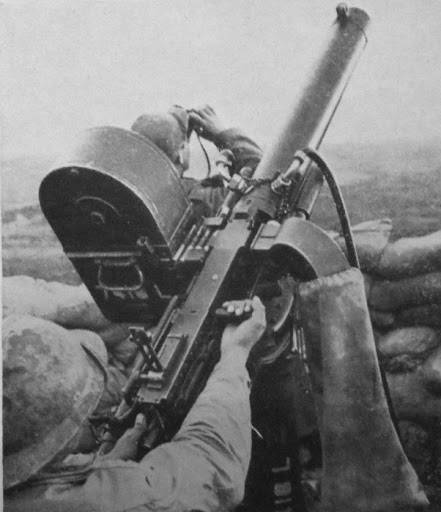
The machine gun was mounted on a tripod machine. Thanks to water cooling, he could conduct a fairly long fire with a rate of fire of 550-600 rds / min. The mass of the machine gun was 54,8 kg, and before firing, the casing must be filled with water, which did not make the weapon lighter. The accessory kit for the large-caliber machine gun included a hand-held water pump for circulating coolant in the casing.
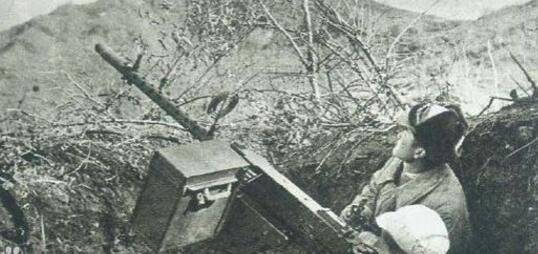
More versatile was the 12,7 mm M2NV machine gun with an air-cooled barrel. Due to the rejection of water cooling, the weight of the machine gun body decreased to 38 kg. Rate of fire 480–550 rds/min.
From time to time, the Chinese managed to capture Japanese single-barreled and twin 13,2 mm Type 93 machine guns, which was a licensed version of the French 13,2 mm Hotchkiss Mle 1930 machine gun.
A machine gun weighing 39,45 kg was mounted on a 57,15 kg machine. But, due to the fact that the infantry machine had an insufficient elevation angle, various semi-handicraft turrets were often used to fire at aircraft. The most accomplished were twin 13,2-mm anti-aircraft guns.
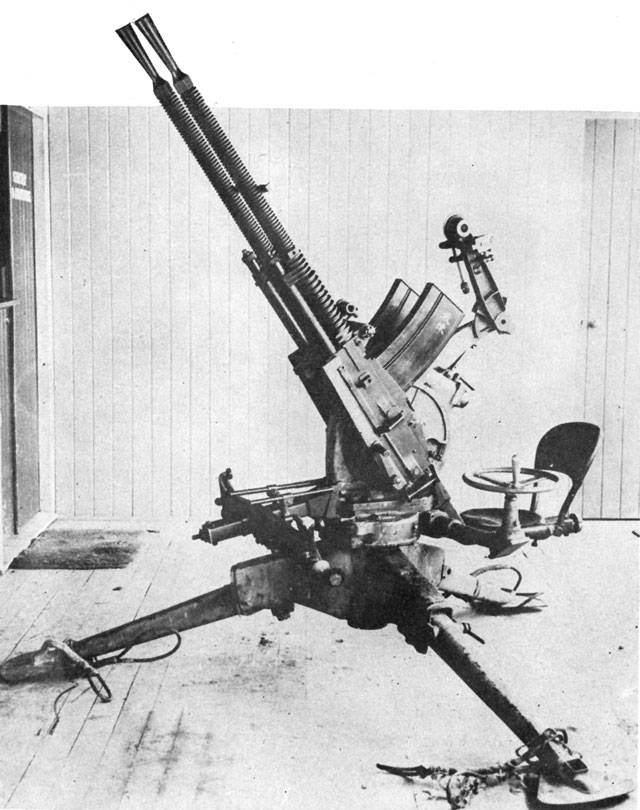
The Type 93 heavy machine gun was powered from a 30-round box magazine. The rate of fire of the machine gun reached 480 rds / min, the effective range was 1 m. In terms of the ability to deal with air targets, the ZPU based on the 500-mm Type 13,2 machine gun surpassed all rifle-caliber anti-aircraft guns. But the Chinese did not have many 93 mm captured machine guns.
In addition to the machine guns listed above, the troops of the Chinese Nationalists and the military units of the Communist Party had a number of other systems. So, in the early 1930s, Great Britain delivered approximately 3 Lewis machine guns chambered in .000 British. Part of the "Lewis" was installed on anti-aircraft tripod machines.
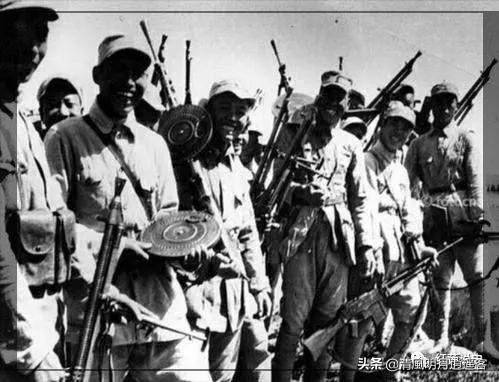
Between 1928 and 1937, China purchased over 3 Switzerland KE000 7,92mm light machine guns from Switzerland. The Swiss machine gun weighed 7 kg. It was fed from a 8,2-round magazine and had a rate of fire of 25 rds / min.
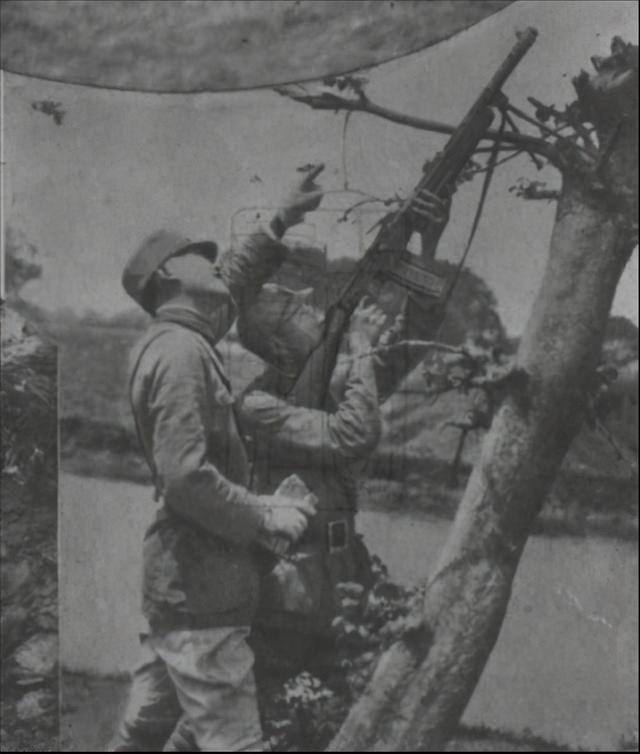
Chinese infantrymen firing at an aerial target with a Switzerland KE7 machine gun
A small number of light and easel 7,92-mm machine guns of Danish production Madsen M1916, M1930 and M1937.
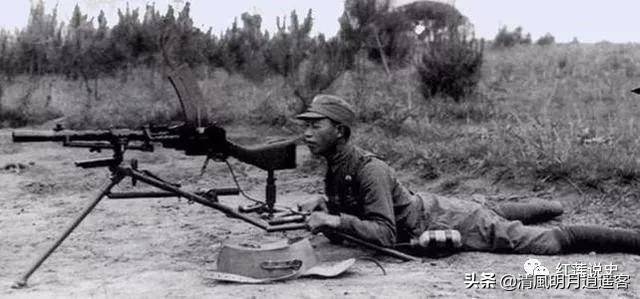
Chinese infantryman with a machine gun "Madsen" mounted on the machine
Between 1933 and 1939, several thousand FN Mle 1930 light machine guns were purchased from Belgium. This 7,92 mm light machine gun was a modification of the Browning BAR automatic rifle.
In the late 1930s, Soviet 7,62-mm machine guns were very common in China.
According to Chinese data, until 1940 the Soviet Union supplied the government of Chiang Kai-shek with 1 MT-300 light machine guns, 25 DP-5 light machine guns, and 600 Maxim machine guns mod. 27/1.
Domestic sources have information that within the framework of Soviet-Chinese military-technical cooperation, the USSR transferred 14 machine guns to the Chinese.
Perhaps the discrepancies are due to the fact that the Chinese statistics do not take into account machine guns intended for installation on combat aircraft and armored vehicles. There is unconfirmed information that in 1938-1939 several dozen quadruple M4 anti-aircraft machine-gun mounts mod. 1931 year. However, when collecting material for this article, it was not possible to confirm this. There are no photographs of quadruple Soviet ZPUs in China, nor are they among the numerous samples presented and displayed by the Chinese militaryhistorical museums.
In 1938, the Chinese army received 800 Finnish 7,92 mm Lahti-Saloranta M/26 machine guns. Machine gun weight in combat position - 9,6 kg. Food was supplied from a 20-round magazine. Rate of fire - 450 rds / min.
The Finnish light machine gun had very good accuracy, but was sensitive to dust, difficult to maintain and often broke down. In terms of service and operational characteristics, it could not be compared with the Czechoslovak ZB-26, and there were no further orders for the Lahti-Saloranta M / 26 from the Chinese government.
Evaluation of the effectiveness of Chinese anti-aircraft machine guns
In parts of the Kuomintang and the military formations of the Chinese communists, until a certain moment they fought together against the Japanese invaders, until 1944 there were almost no specialized anti-aircraft machine-gun installations similar to the Soviet quadruple M4 or the German Zwillingssockel 36 "twin". attempts to create paired, triple and quadruple ZPUs, using machine guns dismantled from damaged or defective armored vehicles and aircraft. However, it was possible to create very few such handicraft installations, and they did not shine with high performance.
Taking into account the fact that the Chinese armed formations had a large number of different types of machine guns, which also often used various ammunition, this made it very difficult to supply, maintain, repair and train personnel.
The most effective in the fight against an air enemy were 12,7-mm American-made M2 anti-aircraft machine guns, as well as captured 13,2-mm Type 93. However, the Chinese had even fewer large-caliber anti-aircraft machine guns than 20-mm anti-aircraft guns.
For firing at air targets when repelling Japanese raids aviation in Chinese infantry units, liquid-cooled machine guns M1917A1, MG.08 and Type 24 were most often used, as well as ZB-53, Hotchkiss Mle 1914, Type 92 and M1919A4 - which had an air-cooled barrel.
If heavy machine guns fired from standard universal tripods, then improvised supports were usually used for light machine guns. In most cases, the main goal of anti-aircraft fire from machine guns was not to shoot down enemy aircraft, but to force them to rise to a height from which targeted bombing and shelling of ground targets became ineffective.
A fairly common 7,92 × 57 mm machine gun cartridge used at that time in China was with an Ss bullet (German: Schweres spitzgeschoß - pointed heavy). A bullet weighing 12,8 g was accelerated in a barrel 700 mm long to 760 m/s.
For firing from anti-aircraft 7,92-mm machine guns, cartridges with armor-piercing bullets SmK (German Spitzgeschoß mit Kern - pointed with a core) showed good efficiency. At a distance of 100 m, this 11,5 g bullet with an initial velocity of 785 m / s could normally penetrate 10 mm armor.
The ammunition of anti-aircraft machine guns could also include cartridges with armor-piercing incendiary bullets PmK (German: Phosphor mit Kern - phosphoric with a core). To adjust the anti-aircraft fire in the machine-gun belt every 3-5 conventional or armor-piercing cartridges, it was recommended to equip a cartridge with an armor-piercing tracer bullet SmK L'spur (German: Spitzgeschoß mit Kern Leuchtspur - pointed tracer with a core).
An armor-piercing tracer bullet weighing 10 g accelerated in the barrel to 800 m / s. Its tracer burned at a range of up to 1 m, which exceeded the effective range of fire on air targets. In addition to adjustments and target designation, an armor-piercing tracer cartridge could ignite fuel vapor when it broke through the wall of the gas tank. Taking into account the fact that Japanese combat aircraft in most cases were deprived of armor protection and did not have sealed fuel tanks, firing at them with armor-piercing incendiary and armor-piercing tracer bullets could be quite effective.
However, after Germany refused military-technical cooperation with China, the supply of rifle and machine-gun cartridges with special bullets ceased, and Chinese factories mainly produced cartridges equipped with lead-core bullets.
According to official Chinese sources, during the eight years of the anti-Japanese war, the Chinese air force and ground air defense units shot down 1 and seriously damaged 543 Japanese combat aircraft. More than 330% of enemy fighters and bombers were destroyed in air battles, in which foreign pilots played a leading role, flying mainly on Soviet and American-made fighters.
Taking into account the fact that the Chinese armed forces had 20–40 mm anti-aircraft guns and 75–88 mm anti-aircraft guns, it is now impossible to establish even approximately how many Japanese aircraft were shot down by rifle and machine gun fire.
To be continued ...
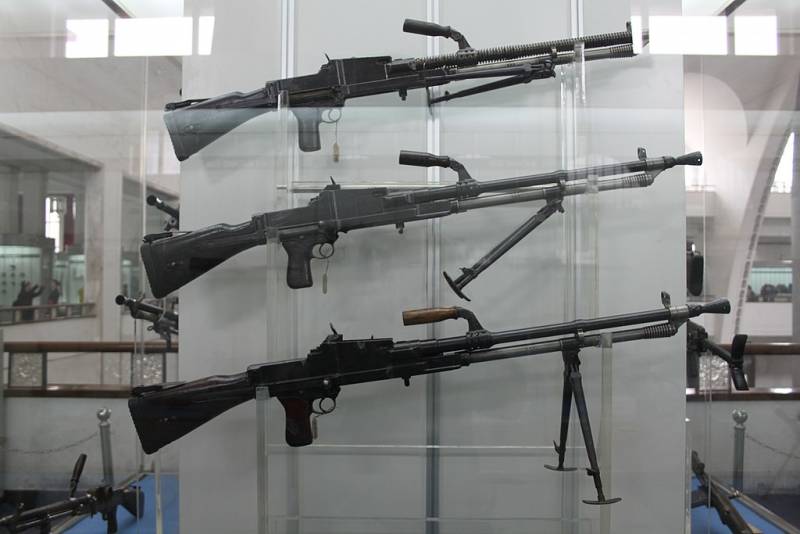
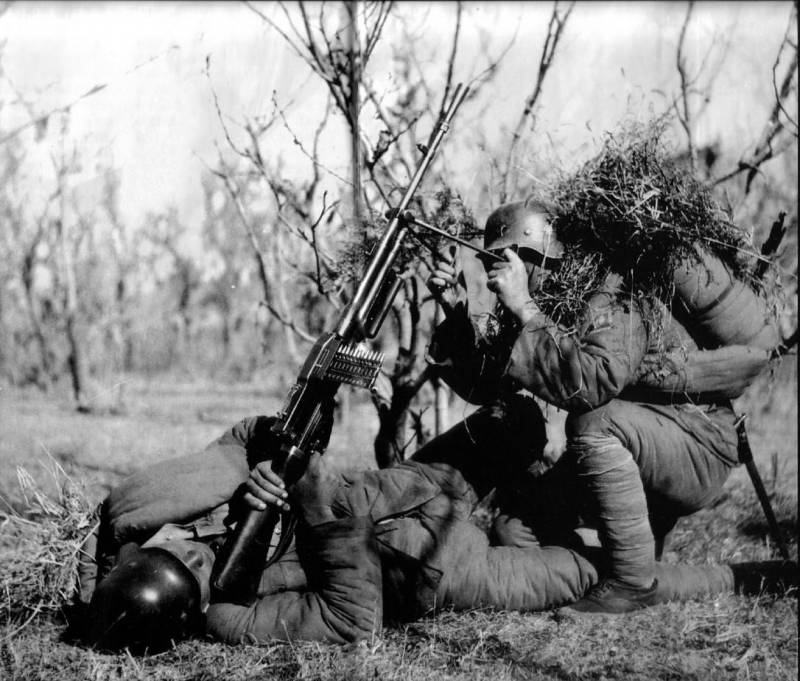
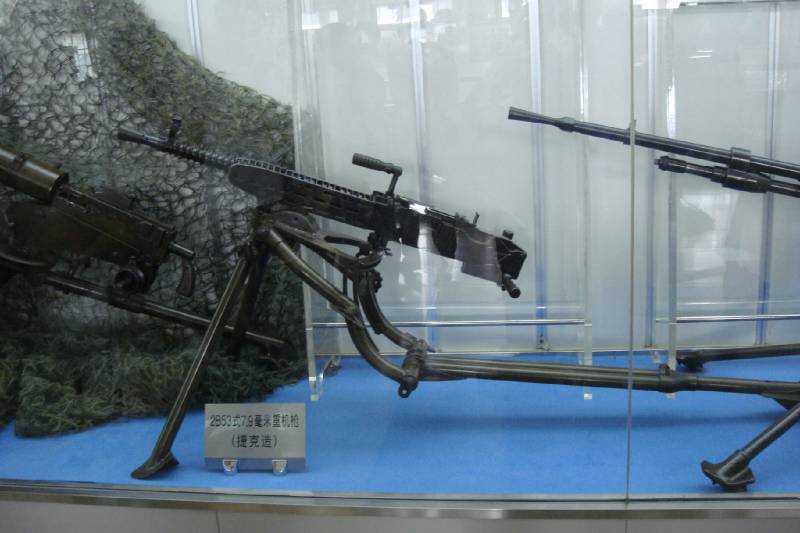
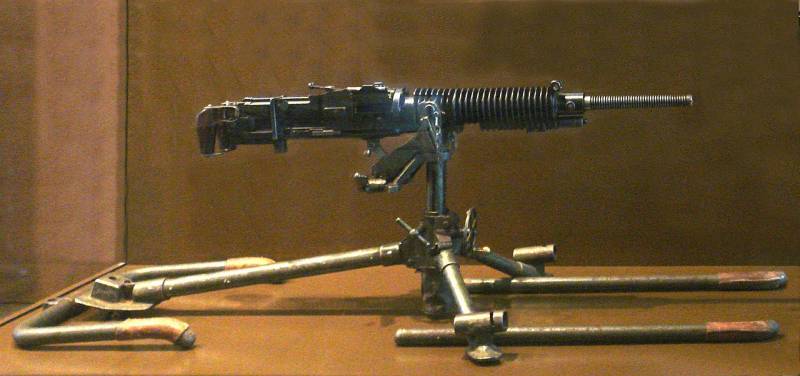
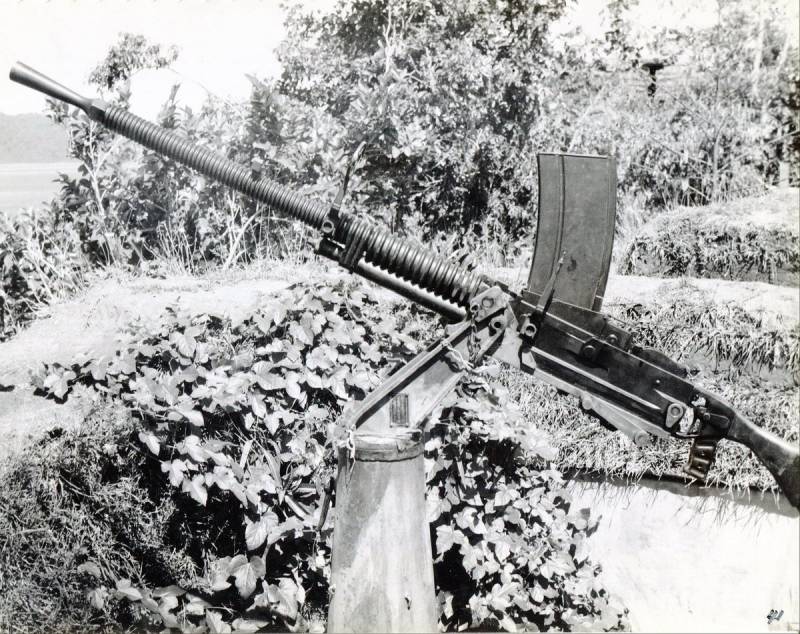
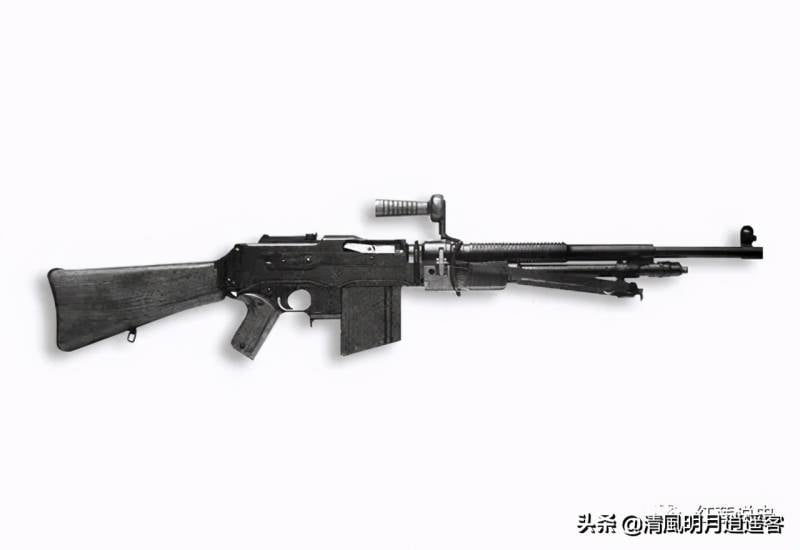
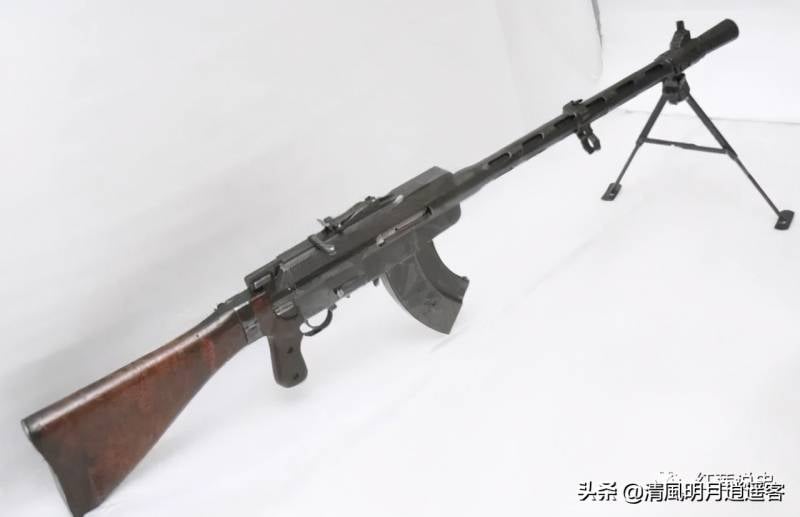
Information